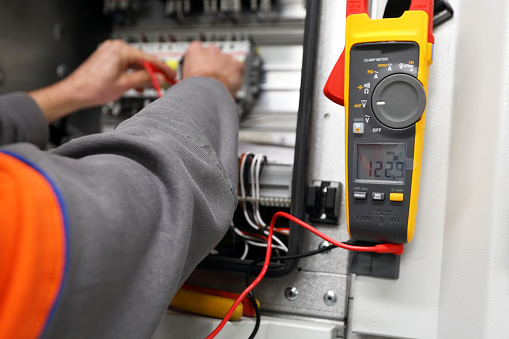Every car owner has a range of responsibilities to ensure its safe and continued operation. The battery is a big one – there’s only so much a car owner can do to ensure it runs, but the professionals easily diagnose problems and troubleshoot car batteries with a clamp meter. It is attached to the battery without disconnecting terminals or removing caps. It makes the process simple.
What is a Clamp Meter?
A clamp meter‘s primary function is measuring amperage or current. This handheld unit can also measure resistance and voltage. It is a type of multimeter, but multimeters generally measure low current, voltage, resistance, and continuity. Clamp meters possess some of these additional abilities, and there are also test meters built to work in conjunction with an amp clamp attachment.
The biggest difference between a clamp meter and a multimeter is that the former is designed to measure high amperage or currents and the latter is for accuracy and resolution. A clamp meter features two jaws that you can secure around an electrical conductor. The leads are flexible and insulated for safety and when the clamp meter is attached to a conductor, it will measure voltage, resistance, AC, and DC. It can also measure capacitance, frequency, and more.
How To Use a Clamp Meter
First things first, the car should not be running and the lights should be off as well. You should always wear gloves when working with car batteries, it provides additional protection against battery posts or acid. The black clamp should be attached to the battery’s negative terminal and the red to the battery’s positive terminal. The clamps should be closed fully around the terminals, otherwise, you may not receive an accurate reading. Turn the clamp meter on and select your voltage setting. The display on the clamp meter will show you the voltage present in the battery. A healthy battery typically ranges between 12 and 14 volts, and anything fewer than 12 indicates the need for a recharge.
Turn the power off on the clamp meter before you remove the clamps. When you release the clamps be sure to wipe the jaws and terminals with a clean rag, this will remove any residue and keep your equipment in good working order.
Accurate Readings
There are a few key tips to help you ensure you get the more accurate readings possible, and ensuring the clamp meter’s jaws are clean is one of the first and most important. Additionally, when you place the clamps, they should be as close to the measurement point as physically possible.
Electromagnetic interference can upset the accuracy of your measurements. So, if there are transformers nearby or even power lines, this can disrupt the efficacy of your clamp meter. Remember, the clamps must be completely closed for an accurate reading.
Finally, you should always take several readings and use the average as your working total. It’s the most efficient way to ensure accuracy. These tips can help you feel confident that your clamp meter readings are as accurate as possible.
The process is a fairly simple one, but using the device properly is the key to ensuring accurate results.
